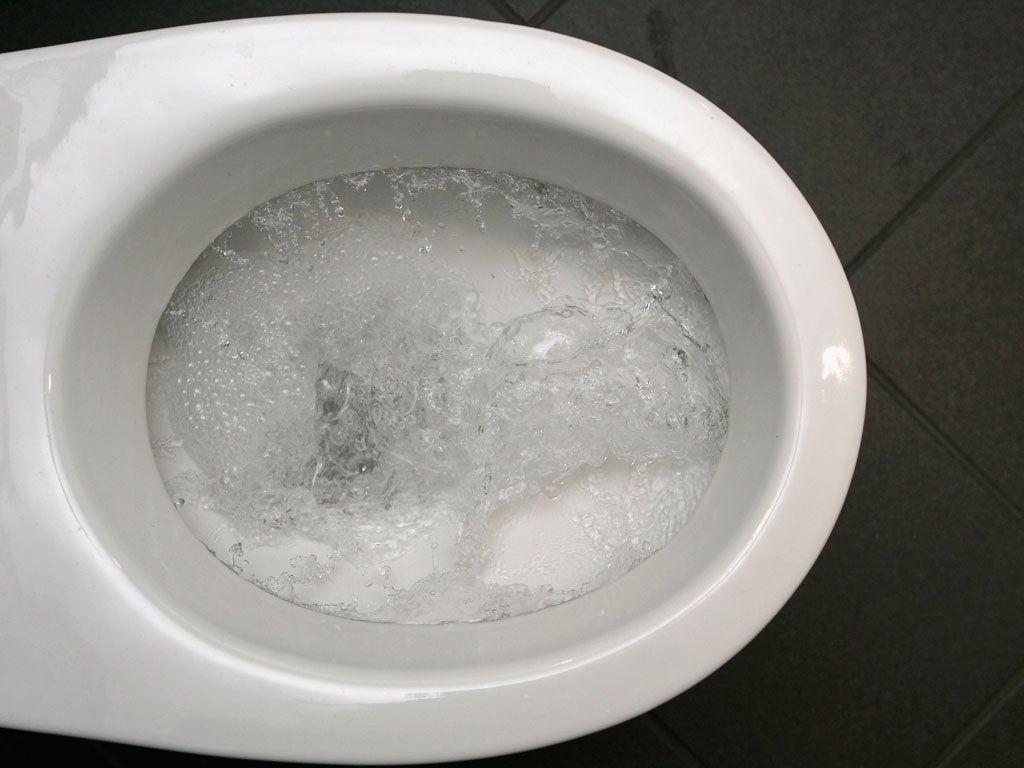I’d rather lose my dignity with a handstand on the toilet bowl than risk contamination
There are a thousands of ways to catch the Norovirus, and avoiding them takes dedication, skill and a certain shamelessness


You want to know how to get through the rest of the winter norovirus free? Don’t handle anything. This advice, I accept, will be harder for some to follow than others. To me – because I grew up to be a universal non-handler, not touching other people, alien food, animals or myself – it’s second nature. That I was a precociously fastidious boy I ascribe primarily to a confused understanding of Jewish hygiene laws: if it was sinful to go near some things, but impossible to remember in the heat of living which, the most sensible plan of action was to go near nothing. Otherwise I put it down to my family’s revulsion, probably acquired over centuries of being treated like dirt in Eastern European shtetls, from refuse.
Though we lived in a house in Manchester big enough for us all to enjoy a degree of privacy, we congregated in the living room. Whoever needed to make use of the bathroom or the lavatory would slip away without making reference to it, though his absence was immediately noticed. There were two sorts of contamination we feared: viral and aural. Distance and doors protected us from the latter; against the former, we waged an unending war of disinfectant and ingenious precaution.
What we most went in terror of, to be precise, were drains, sinks, pipes, plugholes, toilet bowls, anything, that is, through which waste matter was dispatched and therefore through which waste matter could be regurgitated. Just because you hadn’t seen the regurgitation process with your own eyes didn’t mean it hadn’t happened. In the night, for example, or while you were out of the house. Back it all came. And whoever doubts that toilet traffic can be two-way should try sitting on an outback dunny in far North Queensland and waiting for the blue frogs to come leaping back up through the plumbing.
Draining away
In Manchester, from where I confess we would have re-migrated to Lithuania had we seen a frog in the lavatory, this anxiety extended not only to drains and plugholes, but to everything in their vicinity. Anything on to which germs could have leapt – handles, levers, chains, plugs, shower heads, towel rails, light switches, wall sockets – we avoided naked bodily contact with like the plague because they were the plague.
In the first 15 years of my life, I never once flushed a lavatory with my bare hands. To those anxious to avoid norovirus today, I recommend flushing with the ends of a scarf or a tie, also gloves, though gloves have to be thrown away once they’ve been used for this purpose, which makes them an expensive option unless you buy them from the market, but remember that means risking such market viruses as those attendant on receiving change or breathing in.
As for trying on gloves that are sure to have been tried by someone before you, don’t even consider it. Man-size Kleenex doubled and fashioned into a sort of glove itself is an alternative, provided you destroy it immediately afterwards, though you can easily get trapped in that vortex of using one to flush the lavatory and then realising you have to use another to flush the first away, and so on until you have emptied the box or lost your mind.
Best to employ your foot wherever possible. If the lever is too high, you can always stand on the pedestal, so long as you don’t omit to clean it as a courtesy to the person who comes after you. There are people I know who feel they need to clean their shoes after this as well, but that strikes me as neurotic. What you do if the lavatory is old fashioned and has a chain depends on your athleticism. I had a lanky friend at school who used to invite us into the latrines to watch him do a handstand on the toilet bowl and pull the chain by making a sort of grappling hook of his feet, but I wouldn’t recommend that to everybody.
On guard
It’s important, once you are set on such a course – and as long as young men are spitting in the street to attract young women, and young women are throwing up in it to attract young men, such a course is necessary – it’s important to follow it through to the letter. There’s no point, for example, in being vigilant in the matter of what you touch around the cistern if you go insouciant in the matter of what you touch around the sink.
Assume you have emptied a dispenser of soap on to your fingers and then scalded them for upwards of 45 seconds in boiling water – all this goes for nothing if you then manually turn off a tap that will previously have been touched by someone who, for all you know, is not only a constitutional bare-hand chain-puller but has dropped his iPhone into the lavatory pan and fished it out without even rolling up his sleeves.
How to turn off a tap without undoing everything you turned the tap on to achieve remains one of the great hazards of using public conveniences. Unless you’re lucky enough to have found taps that work electronically – and you’ll encounter these only in expensive restaurants and Germany – I would propose the scarf, the tie, your elbow or the foot option again. Turning a tap off with your foot requires considerable dexterity and balance – only ballet dancers do it well – and can be embarrassing in a crowded lavatory at the theatre, but you can always lurk in the bar – keeping your distance from other drinkers – and wait for everybody to return to their seats. So you miss the play? You’ll be missing more than that when you’re emptying the contents of your stomach through your throat on your own bathroom floor.
In the end, the choice is yours. You can keep your dignity or you can keep your health.
Join our commenting forum
Join thought-provoking conversations, follow other Independent readers and see their replies
Comments